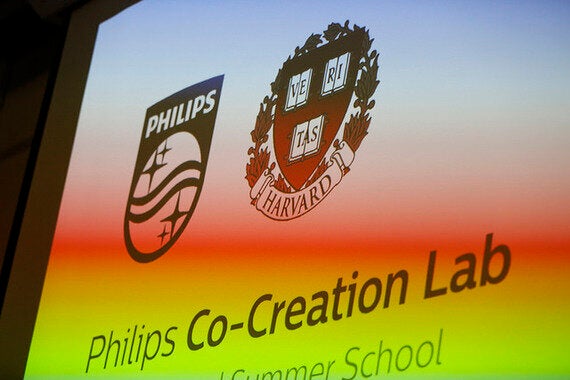This article has been co-authored with Greta Seeger
The challenge for many companies nowadays is a long-established one: How do you get people in your organization to work together and break the internal boundaries that hinder innovation and creativity? We know now the answer to that question as collaboration.
More now than ever the urgency for true collaboration has dramatically increased in a fast-paced, global world with constant growing complexity; particularly in the complex health care and health-tech industry where silo-thinking has become the biggest threat for organizations seeking new innovations. While simple in the formulation, how do we make this happen?
To overcome these boundaries, companies such as Google with its new holding company Alphabet or IBM spend millions every year to restructure their organizations from the bottom up with new departments and units, hybrid reporting lines, and different business processes. Building new organizational structures could be the first step to ignite the process that can lead to collaboration. Yet even more crucial and key to the creation a new culture is the crafting of new structures on a more ad hoc basis - a new working culture of openness and diversity for a multitude of talented individuals.
A few years ago, Philips started the journey of embedding into its organizational DNA a more heterogeneous working culture, which dealt with thinking in a more holistic way. What altered Philip's genes is called Co-Creation.
Philips has introduced the user-centered innovation method and mindset, Co-Creation, to blend and make convergence of business experts, engineers and designers internal to the organization, with the sole purpose to foster innovation. Dismantling organizational silos with a new induced paradigm of collaboration is what achieving a collaborative culture is all about. Yet how can an organization collaborates while propelling itself also towards the outer world? We may have an answer for that..
Alliance of Systems Thinkers and Co-Creators

An organization needs to be bold enough to cross its own IP-protective moat over, despite the initial resistance this may cause. Sean Carney, Chief Design Officer at Philips, is aware of this and acknowledges "that no single company will be able to create such solutions alone, so it will need to be done by working closely together with others." Furthermore, he points out, that especially "in healthcare, we need to bring enterprise-wide solutions to hospitals and to emerging healthcare systems that are accountable for the care delivered to entire populations."
One brave initiative to work closely together with others and to overcome such internal and external barriers has been the Philips Co-Creation Lab introduced this year by Philips Design in partnership with Harvard Summer School's System Thinking course which is a course I have introduced at Harvard in 2011 as primer for the Institution. With this experiment of bridging two worlds of Co-Creation and Systems Thinking, it has been shown how real innovators can solve problems within a short period of time if prompted to do so within a context of collaboration and thinking reforms. System Thinkers and Co-Creators welcome difficult challenges because they see them as blind spots, waiting to be illuminated, rather than problems or insurmountable issues, meant to be unresolved.
The examination of the entire healthcare system, patients, health care specialists, providers, entrepreneurs, politicians, and regulators has particularly high importance from the perspective of user-centered healthcare and personal health innovations, which is becoming a dominant area of the research in Health Care. This is why twenty-five international System Thinkers solved challenges around personal health from a macro to a micro perspective, with the ease of an army who is entering into unchartered territory, fuelled with confidence. This confidence is what systems thinkers call "inquiry".
Using unique mapping techniques, which are typical of what systems thinking uses to represent complex problems, six teams analyzed the causalities and correlating factors coming up with digital services that shape the health care world of tomorrow: From helping elderly people to reconnect again with their social peers, to empowering young mothers in their first months with their newborn baby, among other challenges, the primary goal of joint effort between Systems Thinkers and Co-Creators is to simultaneously generate knowledge that can help researchers in assessing the viability of their fields of investigation.
But there is more.
Co-Creation is a mindset rather than just a technical connotation of a given experiment between two entities. It implies a strong belief that collaboration and the glue that comes from it, is the new intangible asset that can drive an effort to become successful. It is not about knowledge per se, at least not in the academic context, but it is more about knowledge-ability and sense-ability to detect signals, probe them, contextualize them into a Meta understanding and inspire action to prototype and test.
More and more technology companies are seeking meaningful partnerships to create collaborative networks with academic research, innovative startups and even competing firms. The performing companies of tomorrow must understand collaboration as the new language spoken, as a requisite for any attempts to win the markets and generate prosperity. It is clearer now than ever before, why this is no longer ancillary, but a new needed necessity. Philips has understood this early in the game and its current business horizon, enriched by the new collaboration with MIT, demonstrates once more how the behavior of the collaborative companies is radically different from the one of those companies that have not found the courage to break down the silos and release the creative tension within.
References
Rigby, Bill. "IBM dismisses Forbes report of massive layoffs." Reuters. Retrieved from http://www.reuters.com/article/2015/01/26/us-ibm-restructuring-forbes-idUSKBN0KZ1WF20150126
Dougherty, Connor. "Google to Reorganize as Alphabet to Keep Its Lead as an Innovator." New York Times. Retrieved form http://www.nytimes.com/2015/08/11/technology/google-alphabet-restructuring.html?_r=0
Carney, Sean. "Design Thinking is Dead. Long Live Design Thinking." Philips Blog. Retrieved from http://www.philips.com/a-w/innovationmatters/blog/design-thinking-is-dead-long-live-design-thinking.html
Chandler, David L. . "Philips establishes alliance with MIT." MIT News. Retrieved from http://news.mit.edu/2015/philips-alliance-mit-0519
http://www.philips.com/a-w/innovationmatters/blog/design-thinking-is-dead-long-live-design-thinking.html
http://news.mit.edu/2015/philips-alliance-mit-0519
https://www.flickr.com/photos/philips_newscenter/sets/72157657012064470/with/20490539068/
http://www.design.philips.com/
http://www.summer.harvard.edu/courses/systems-thinking-navigating-through-organizational-complexity
http://realizingempathy.com/
http://www.common-sensing.com/
